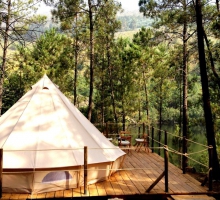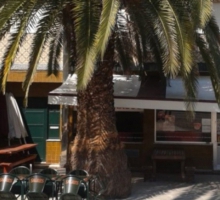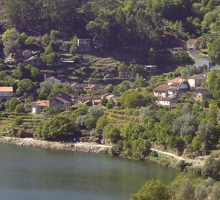The village of Ermelo has obviously a medieval origin, as it figures from the monastery built there. Its location, on the right bank of the Lima River, the configuration of the terrain and the peculiar sun exposure, give this place a very interesting microclimate.
We owe to the Cistercian monks who came here in the 13th century, the introduction of orange crop fields in this location. Back then, these monks brought in Europe the state of the art as far as agriculture goes, being well versed in fertilization techniques and soil use. Realizing that the microclimate of this spot was suitable for the cultivation of oranges, they introduced them in … and it still perpetuates nowadays.
The Ermelo orange is of thin peel, very sweet, with little fibres and almost no seedless… a delight you cannot miss! Oranges harvesting starts on February, but the season extends until April or even May. And during heated pre-summer afternoons of this month an orange juice is a wonder! So do not forget: if you visit Ermelo during this season, have a taste of our delicious oranges!
The ancient monastery, probably erected by D. Teresa, adopted the Cistercian order in the late 13th century, thereby integrating the area under the influence of Santa Maria de Fiães. In 1441, it was transformed in a parish church, returning to the order in 1497. In 1560, the already secular church, presented an advanced state of disrepair, its income being integrated in the college of St. Bernard of Coimbra.
Currently there are still some of the architectural structures of the Romanesque church as well as posterior changes made during the modern era. In its original form it would be a church of three aisles and headboard with three quadrangular chapels. The original Cistercian plan was not completed, probably due to economic difficulties of the local community. The collateral nave was removed, leaving only the triumphal arch of the chapel (visible outside), being on the opposite side adapted to the sacristy. Some of the decorative elements of the cantilevers and capitals are fully integrated in the typical Romanesque basin of the Minho, but the whole architectural plan’ work is an exemplar of the typical model used by the Cistercian order. In the south area, some arches belonging to the structures of the regular area of the monastery are noticeable.
Location: Arcos de Valdevez
We owe to the Cistercian monks who came here in the 13th century, the introduction of orange crop fields in this location. Back then, these monks brought in Europe the state of the art as far as agriculture goes, being well versed in fertilization techniques and soil use. Realizing that the microclimate of this spot was suitable for the cultivation of oranges, they introduced them in … and it still perpetuates nowadays.
The Ermelo orange is of thin peel, very sweet, with little fibres and almost no seedless… a delight you cannot miss! Oranges harvesting starts on February, but the season extends until April or even May. And during heated pre-summer afternoons of this month an orange juice is a wonder! So do not forget: if you visit Ermelo during this season, have a taste of our delicious oranges!
The ancient monastery, probably erected by D. Teresa, adopted the Cistercian order in the late 13th century, thereby integrating the area under the influence of Santa Maria de Fiães. In 1441, it was transformed in a parish church, returning to the order in 1497. In 1560, the already secular church, presented an advanced state of disrepair, its income being integrated in the college of St. Bernard of Coimbra.
Currently there are still some of the architectural structures of the Romanesque church as well as posterior changes made during the modern era. In its original form it would be a church of three aisles and headboard with three quadrangular chapels. The original Cistercian plan was not completed, probably due to economic difficulties of the local community. The collateral nave was removed, leaving only the triumphal arch of the chapel (visible outside), being on the opposite side adapted to the sacristy. Some of the decorative elements of the cantilevers and capitals are fully integrated in the typical Romanesque basin of the Minho, but the whole architectural plan’ work is an exemplar of the typical model used by the Cistercian order. In the south area, some arches belonging to the structures of the regular area of the monastery are noticeable.
Location: Arcos de Valdevez






